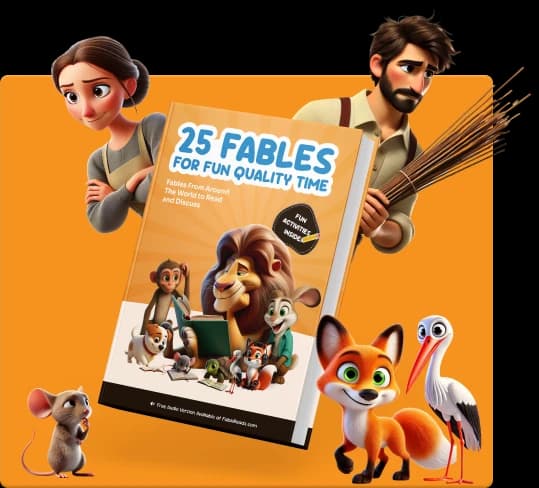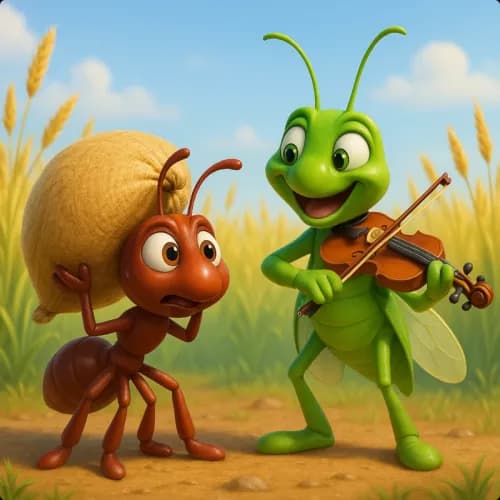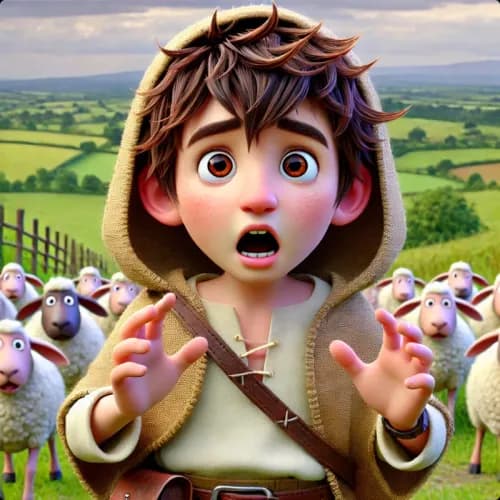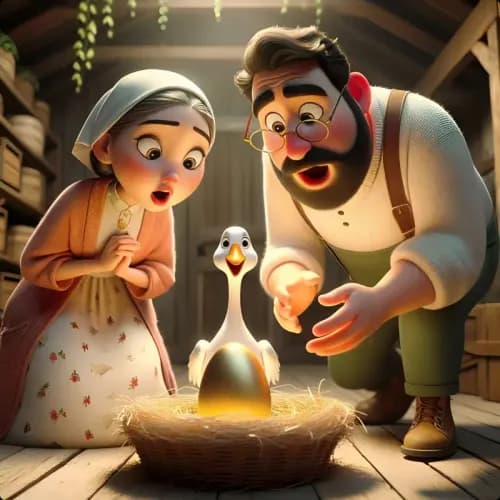Aesop | Greece
Le Renard et la Cigogne
Un renard rusé trompe une cigogne avec une assiette plate, mais la cigogne se venge en servant la nourriture dans un pot.

Il était une fois, dans une forêt, un renard rusé. Il voulait jouer un tour à son voisin, la cigogne, alors elle l'avait invité à dîner.
Quand l'heure du dîner est arrivée, le renard a servi la soupe dans une assiette plate. Elle a ri doucement en regardant la cigogne essayer de manger. Le long bec mince de la cigogne ne pouvait pas attraper de soupe. Peu importe combien elle essayait, la soupe glissait de son bec.
Quelques jours plus tard, la cigogne a invité le renard à dîner. Cette fois, la cigogne a servi la nourriture dans un grand pot à col étroit. La cigogne utilisait son long bec pour atteindre la délicieuse nourriture à l'intérieur.
Mais le renard avait un problème. Son museau court et large ne pouvait pas atteindre la nourriture au fond du pot. Elle essayait de lécher et de renifler autour du haut, mais elle ne pouvait pas accéder à la nourriture.
Finalement, la cigogne a apprécié son repas, tandis que le renard était encore affamé. Le renard a réalisé que son tour s'était retourné contre elle.
Achetez un Livre et Aidez à Apporter les Fables au Monde
Profitez de 25 fables sélectionnées à vie, imprimées. Chaque achat soutient des histoires gratuites pour les enfants, parents et enseignants du monde entier sur fablereads.com

















